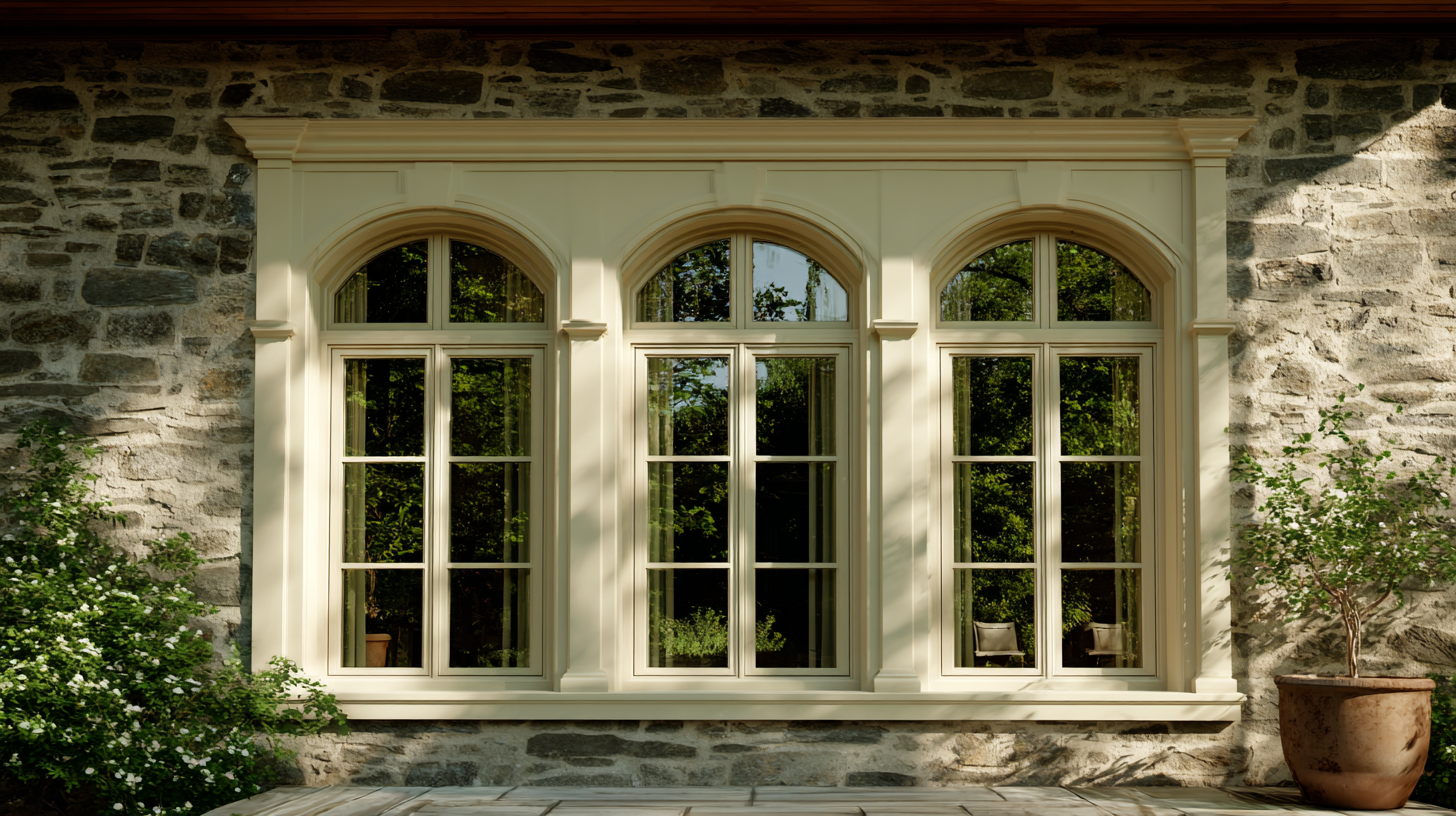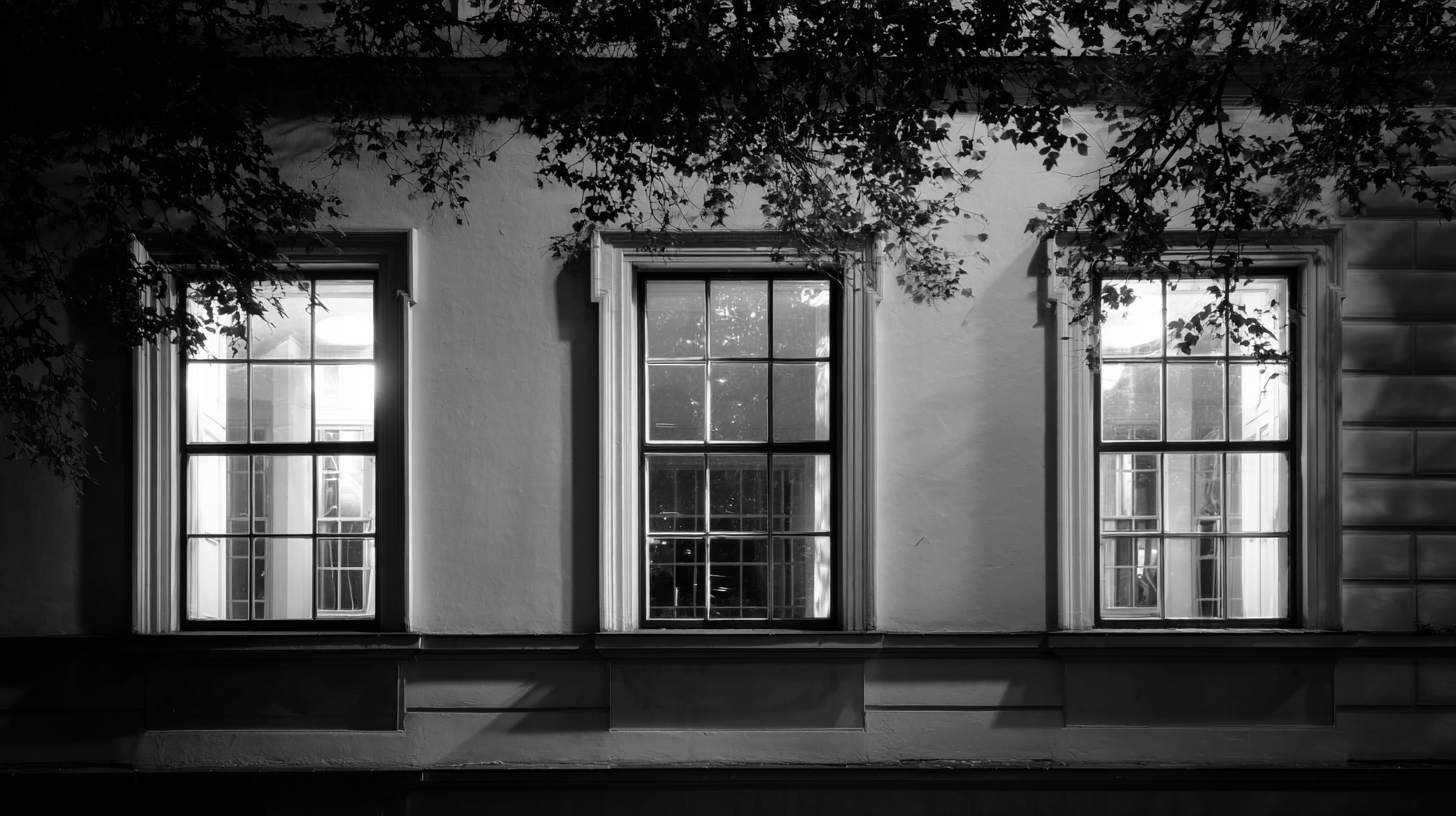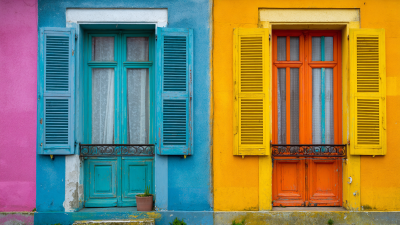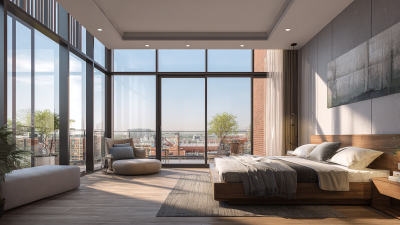Innovative House Windows Designs That Enhance Home Energy Efficiency
The design of house windows has a profound impact on home energy efficiency, a critical consideration in today's economy where energy conservation is paramount. According to the U.S. Department of Energy, windows can account for up to 25% to 30% of a home's energy use, making the choice of window design and materials crucial for homeowners looking to reduce their energy bills and carbon footprint. Innovative window technologies, such as triple glazing, low-emissivity coatings, and thermally broken frames, have been shown to significantly improve insulation and reduce heat transfer, resulting in energy savings of 10% to 50% depending on the climate and specific application. As the demand for energy-efficient homes continues to rise, embracing cutting-edge window designs not only helps owners enhance the aesthetics of their properties but also contributes to a sustainable future.

Energy-Efficient Glass Technologies: Understanding Low-E Coatings and Their Benefits
In the realm of sustainable architecture, energy-efficient glass technologies play a crucial role in enhancing home energy efficiency. One notable innovation is the use of low-emissivity (Low-E) coatings. These thin, virtually invisible layers applied to glass surfaces significantly reduce the amount of infrared and ultraviolet light that can pass through the glass without compromising the amount of natural light that enters a space. By minimizing heat transfer, Low-E coatings help maintain stable indoor temperatures, resulting in reduced reliance on heating and cooling systems.
The benefits of Low-E coatings extend beyond just energy savings; they also contribute to increased comfort and a better living environment. Homes equipped with Low-E windows experience fewer temperature fluctuations, reducing cold drafts and hot spots. Furthermore, these coatings protect interior furnishings from fading by blocking harmful UV rays, thus prolonging the life of furniture, fabrics, and artwork. As homeowners increasingly seek sustainable solutions, the adoption of advanced glass technologies with Low-E coatings can significantly bolster energy efficiency while enhancing the aesthetic appeal and comfort of living spaces.

Maximizing Natural Light: The Role of Window Orientation in Reducing Energy Costs
Window orientation plays a critical role in maximizing natural light and enhancing home energy efficiency. According to the U.S. Department of Energy, strategically positioning windows can significantly reduce reliance on artificial lighting and heating, leading to substantial energy savings. South-facing windows, for example, can capture the sun’s warmth in winter while minimizing heat gain in summer when combined with proper shading. Utilizing passive solar design principles, homeowners can achieve an average reduction of 20-30% in heating and cooling costs, which demonstrates the impact of thoughtful window placement.
Moreover, the American Institute of Architects (AIA) reports that homes with optimized window orientation can enhance indoor comfort while contributing to energy efficiency. Properly oriented windows allow for abundant daylight, reducing the need for electric lights during daytime hours. This also has beneficial effects on occupants' wellbeing, as studies show that natural light exposure can improve mood and productivity. By embracing innovative window designs, such as those incorporating low-emissivity (Low-E) coatings and advanced glazing technologies, homeowners can further enhance energy performance while enjoying the aesthetics of their living spaces.
Innovative Ventilation Solutions: How Operable Windows Improve Airflow and Comfort
Operable windows are an essential feature in modern home design, significantly enhancing air circulation and overall comfort while contributing to energy efficiency. According to the American Society of Heating, Refrigerating and Air-Conditioning Engineers (ASHRAE), proper ventilation can lower indoor air pollution levels by up to 80%. By allowing homeowners to adjust airflow according to their needs, operable windows help create a balanced indoor environment, reducing reliance on mechanical heating and cooling systems. This can lead to energy savings of approximately 15-30%, as highlighted in studies by the U.S. Department of Energy.
Incorporating operable windows into home designs is not only beneficial for energy efficiency but also encourages a healthier living space. A report by the National Renewable Energy Laboratory indicates that enhanced natural ventilation can improve indoor air quality, leading to better occupant health and comfort. When strategically placed, operable windows assist in cross-ventilation, effectively cooling spaces while maintaining indoor comfort levels.
**Tips for Maximizing Benefits of Operable Windows:**
- Position windows across from each other to create effective cross-ventilation.
- Use window screens to keep insects out while allowing fresh air in during warmer months.
- Opt for window designs that maximize sunlight exposure, as natural light can further reduce the need for artificial lighting.

Smart Window Systems: Harnessing Technology for Optimal Energy Management
Smart window systems are revolutionizing energy management in homes, integrating advanced technologies to optimize thermal performance and reduce energy consumption. According to a report by the Department of Energy, buildings account for 40% of the energy consumed in the United States, with windows contributing significantly to heat loss during winter and heat gain in summer. Smart windows utilize dynamic materials that can adjust their opacity or reflectivity in response to external temperature, sunlight, or occupancy, promoting enhanced energy efficiency.
Recent studies indicate that implementing smart window technologies can lead to a 10-25% reduction in heating and cooling costs. For instance, electrochromic windows, which change tint in response to voltage, have been shown to provide substantial energy savings by reducing reliance on artificial lighting and minimizing HVAC system use. Moreover, these windows can be integrated with building management systems, allowing homeowners to monitor and control their energy consumption in real time. As the smart home trend continues to grow, window technologies are poised to play a crucial role in achieving sustainable living solutions.
Innovative House Windows Designs That Enhance Home Energy Efficiency
| Window Design | Energy Efficiency Rating | Technology Used | Estimated Savings (%) | Environmental Impact |
|---|---|---|---|---|
| Triple Glazing | A++ | Low-emissivity Coating | 30-40% | Reduction in Carbon Footprint |
| Smart Tinting Windows | A+ | Electrochromic Technology | 25-35% | Lower Energy Consumption |
| Solar Control Glass | A | Reflective Coatings | 20-30% | Improved Indoor Comfort |
| Vacuum Insulated Glazing | A++ | Vacuum Layer for Insulation | 40-50% | Significant Energy Reduction |
| Low-E Windows | A+ | Thin Metallic Coating | 10-25% | Reduced Heating and Cooling Costs |
Material Matters: Exploring the Impact of Frame Insulation on Energy Efficiency
The choice of window frames significantly influences a home's energy efficiency, as detailed in the 2021 U.S. Department of Energy report, which highlights that properly insulated frames can reduce heating and cooling costs by up to 30%. Energy-efficient window frames made from materials like fiberglass and vinyl offer superior insulation compared to traditional aluminum frames. This is primarily due to their lower thermal conductivity, which helps in minimizing heat transfer. By selecting frames with high-performance insulation, homeowners can ensure a more stable indoor temperature, decreasing reliance on HVAC systems.
Moreover, the National Fenestration Rating Council (NFRC) emphasizes the importance of frame insulation in their performance ratings. According to their data, windows with insulated frames can achieve U-factors as low as 0.20, significantly outperforming standard models. This not only contributes to energy savings but also enhances comfort levels within the home. Investing in innovative window frame designs can lead to substantial long-term benefits, aligning environmental sustainability with cost efficiency for homeowners committed to reducing their carbon footprint.
Related Posts
-

What is the Perfect Window Style for My House? A Guide to Your Options
-

Ultimate Guide to Choosing the Right Windows for Your Home Make the Best Decision
-

7 Essential Features to Look for in the Best Residential Windows
-

How to Choose the Perfect Exterior Windows for Your Home
-

5 Essential Tips for Choosing the Right Window Replacements for Your Home
-

Exploring the Future of Window Replacements at the 138th Canton Fair in 2025 Insights and Trends
